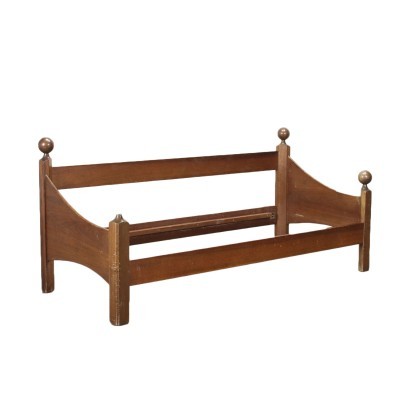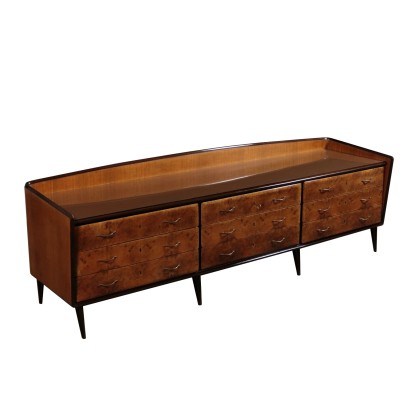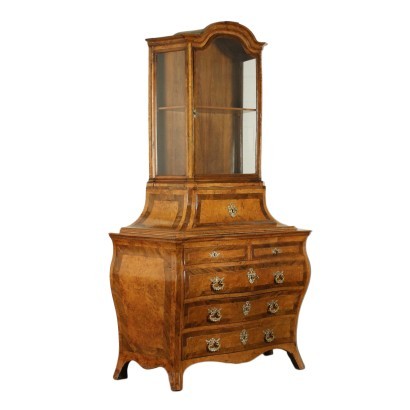Luigi Caccia Dominioni 60s bed
Features
Designer: Luigi Caccia Dominioni
Production: Italiana
Time: 1960s
Production country: Italy
Main essence: Walnut
Description
Bed, walnut wood.
Product Condition:
Product in good condition, with small signs of wear.
Dimensions (cm):
Height: 35
Width: 196
Depth: 81
Bed frame maximum sizes (cm):
Height: 94,5
Width: 204
Depth: 87
Additional Information
Designer: Luigi Caccia Dominioni
Luigi Caccia Dominioni was born in Milan in 1913. He completed the entire cycle of studies, up to the Liceo Classico, at the Istituto Leone XIII in Milan, run by the Jesuits. In 1931 he enrolled in the Faculty of Architecture at the Milan Polytechnic. He graduated in 1936 and obtained the professional qualification in Venice. In 1936, with the brothers Livio and Piergiacomo Castiglioni, he opened a professional studio. He did his military service from 1939 to 1943, but refused to join the Social Republic of Salò and had to go to Switzerland. From 1945 he resumed his activity as an architect, first with his colleague Castiglioni, then, from 1946, with his own professional studio. In 1947 he dedicated himself to the production (Azucena) of furniture and design objects with the architect Ignazio Gardella. He mainly works on buildings in Milan and its province. He moved to the Principality of Monaco in 1975, where he built the Parc Saint Roman skyscraper.Find out more about Luigi Caccia Dominioni with our insights:
FineArt: Lamp 'LTE10'
Production: Italiana
Time: 1960s
1960sMain essence: Walnut
Walnut wood comes from the plant whose botanical name is juglans regia , probably originally from the East but very common in Europe. Light or dark brown in color, it is a hard wood with a beautiful grain, widely used in antique furniture. It was the main essence in Italy throughout the Renaissance and later had a good diffusion in Europe, especially in England, until the advent of mahogany. It was used for solid wood furniture and sometimes carvings and inlays, its only big limitation is that it suffers a lot from woodworm. In France it was widely used more than anything else in the provinces. In the second half of the eighteenth century its use decreased significantly because mahogany and other exotic woods were preferred. It could also interest you
























